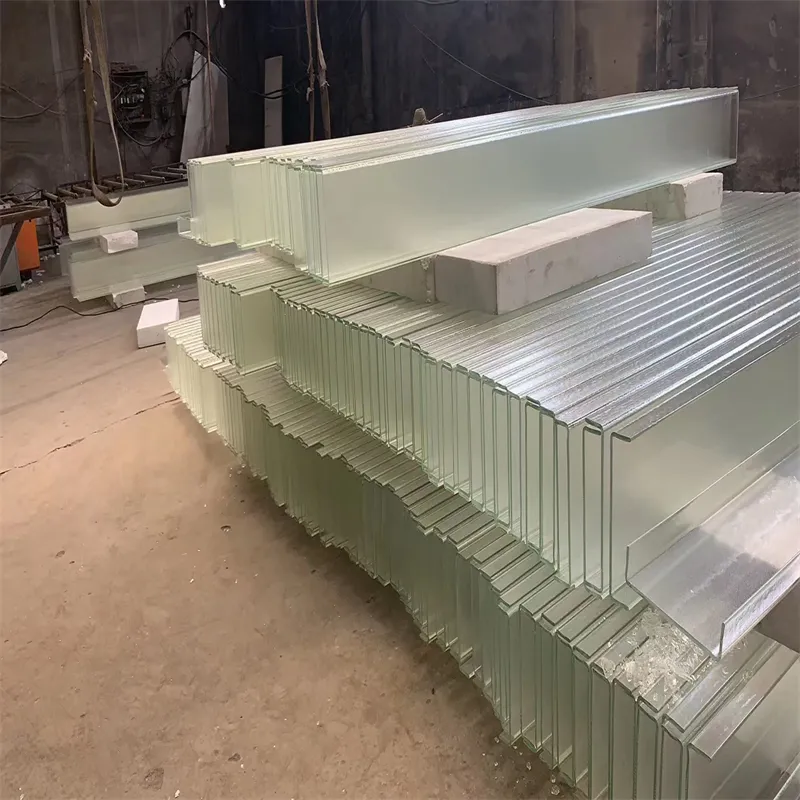10 月 . 16, 2024 00:58 Back to list
Innovative Applications of Reflective Float Glass in Modern Architecture and Design
Reflective Float Glass An Innovative Perspective in Modern Architecture
In the realm of modern architecture and design, materials play a crucial role in shaping the aesthetic and functional aspects of structures. One material that has gained prominence over the years is reflective float glass. This type of glass not only enhances the visual appeal of buildings but also contributes to energy efficiency and environmental sustainability. By examining its characteristics, applications, and benefits, we can appreciate the pivotal role reflective float glass plays in contemporary architecture.
Understanding Reflective Float Glass
Reflective float glass is a type of glass that has a thin metallic coating applied to one side during the float glass manufacturing process. This coating reflects a significant amount of sunlight while allowing a portion of it to pass through. The reflective quality varies based on the nature of the coating, which can differ in color and intensity, thus providing architects and designers with a versatile material for various applications.
One of the critical characteristics of reflective float glass is its ability to reduce glare without sacrificing natural light. This quality makes it an excellent choice for large commercial buildings, skyscrapers, and even residential properties where maximizing daylight while minimizing heat gain is essential. Additionally, reflective float glass can contribute to significant energy savings by decreasing reliance on artificial lighting and air conditioning.
Applications in Modern Architecture
Reflective float glass is widely used in a myriad of architectural applications. In commercial buildings, it provides a sleek, modern appearance while helping to regulate indoor temperatures. Office towers, shopping malls, and hotels often incorporate reflective glass facades that not only serve aesthetic purposes but also improve energy efficiency. The glass creates a striking interplay of reflections and transparency, allowing buildings to blend harmoniously with their urban surroundings.
In residential settings, reflective float glass is increasingly popular for windows and doors. Homeowners are drawn to its contemporary look and the privacy it offers while still allowing for ample natural light. Additionally, it helps to minimize heat loss during colder months and reduces solar heat gain in warmer climates, contributing to more sustainable living spaces.
reflective float glass

Beyond Aesthetics Energy Efficiency and Sustainability
The environmental impact of buildings is a growing concern, and reflective float glass presents several advantages in this regard. By reflecting solar radiation, it reduces the demand for cooling systems, leading to lower energy consumption. This characteristic is particularly beneficial in regions with high temperatures, where traditional glass might allow excessive heat to enter a building, increasing reliance on air conditioning.
Moreover, the use of reflective float glass can contribute to LEED (Leadership in Energy and Environmental Design) certification for buildings. The credits awarded for energy efficiency and sustainable materials can significantly enhance a building’s marketability and appeal to eco-conscious tenants or buyers. In a world increasingly focused on sustainability, incorporating reflective float glass is a step toward achieving greener building practices.
Challenges and Considerations
While reflective float glass offers numerous benefits, there are also challenges and considerations to keep in mind. The reflective surface can create visual discomfort for drivers and pedestrians, leading to safety concerns in urban settings. Moreover, the choice of reflective glass must be balanced with the building's energy performance; in some cases, overly reflective surfaces can lead to excessive heat buildup in nearby areas, contributing to the urban heat island effect.
Additionally, architects and designers must consider the aesthetic implications of using reflective glass. While it can create stunning visuals, it can also overshadow other design elements. The integration of reflective float glass into a cohesive design requires a thoughtful approach, considering the surrounding environment and the intended use of the space.
Conclusion
Reflective float glass is an innovative material that exemplifies the intersection of aesthetics, functionality, and sustainability in modern architecture. Its ability to enhance visual appeal, improve energy efficiency, and promote sustainable practices makes it a valuable asset for architects and designers. As the demand for environmentally friendly designs continues to grow, reflective float glass will undoubtedly remain a significant player in the evolving landscape of architecture, inspiring future generations to embrace the beauty and functionality of this remarkable material.
-
Wired Glass: A Strong and Secure Glass Solution for Various Applications
NewsNov.04,2024
-
Tinted Glass: A Stylish and Functional Choice for Modern Homes
NewsNov.04,2024
-
The Elegance and Versatility of Silver Mirrors
NewsNov.04,2024
-
The Advantages of Copper Free Mirrors
NewsNov.04,2024
-
Tempered Glass: A Reliable Choice for Modern Applications
NewsNov.04,2024
-
Pattern Glass: Stylish and Functional Glass for Modern Design
NewsNov.04,2024
Related PRODUCTS














